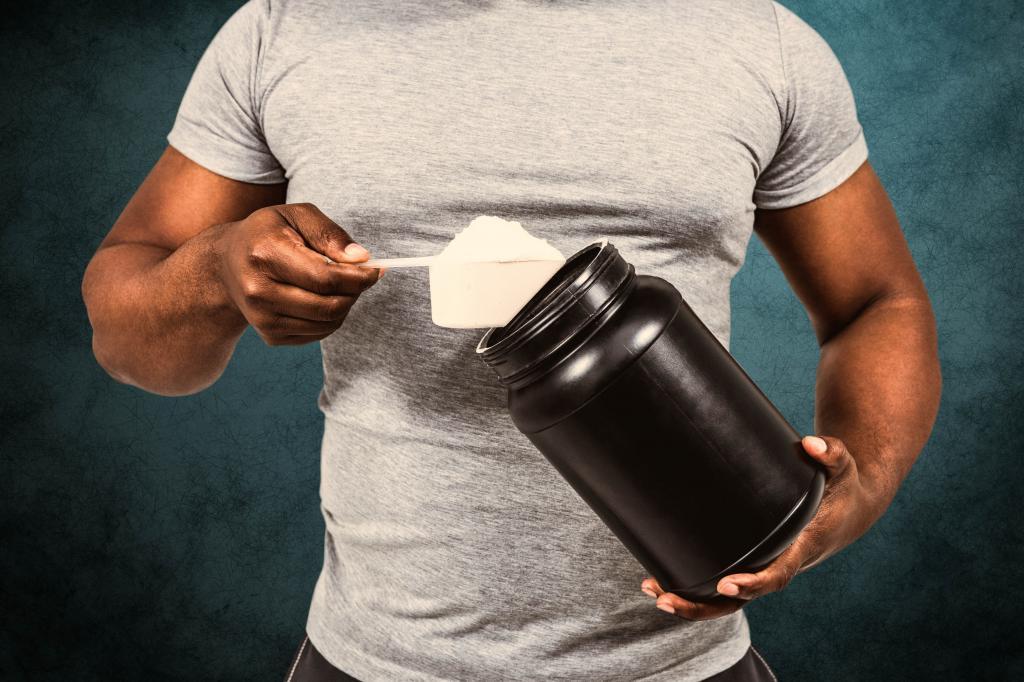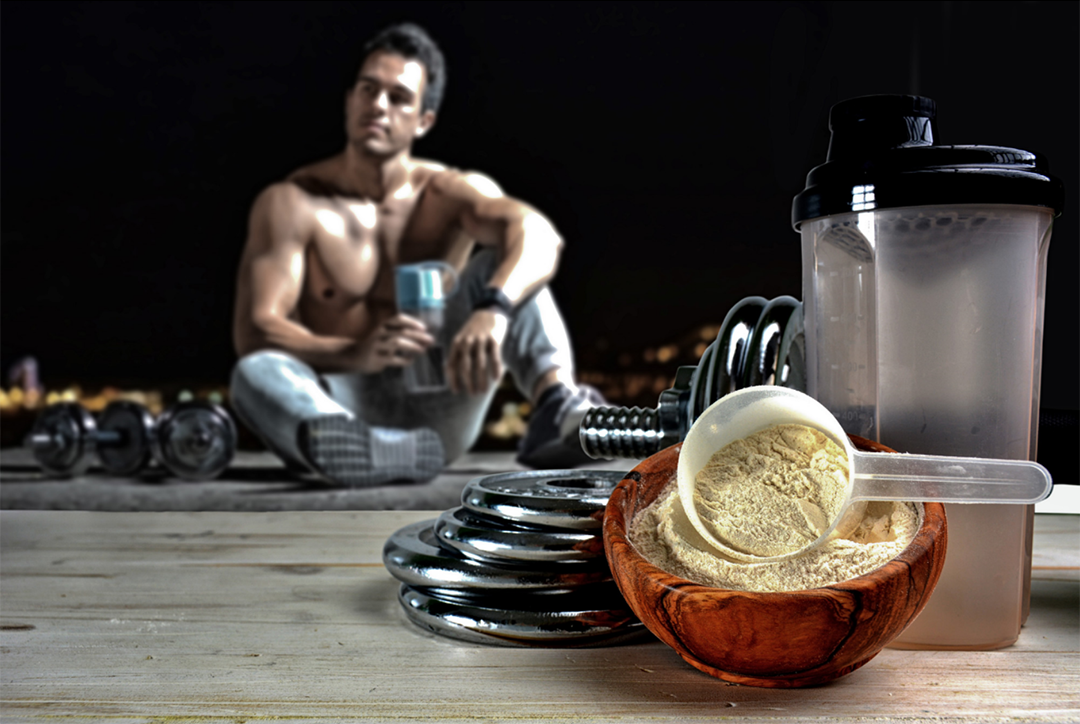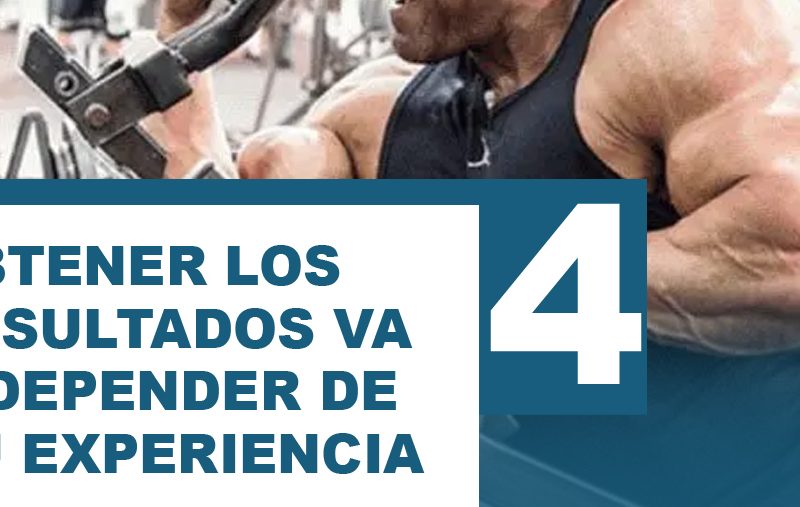There are various times of the day when proteins are taken and, in the case of bodybuilders, things are not so simple, as you have to know how to take advantage of them.
Competitive bodybuilders work to improve their physical traits to the extreme and this depends on several factors ranging from sleep, habits, training or diet manipulation, where obviously proteins play an essential role.
Although many of the dietary dogmas in bodybuilding lack scientific scrutiny, several studies, including timing and dosing of high biological value proteins during the day, have been more recently confirmed by empirical research studies.
Proteins : what does science say?
A more complete understanding of the dietary intake of bodybuilders deserves scientific research, with application to sports and health contexts.

The objective of a macro-study done with competitive bodybuilders in 2015 and published in the prestigious journal Sports Medicine was to carry out a systematic review on diet. Here, researchers assessed the quality and currency of the existing literature and identified research gaps to inform future studies.
- The systematic search of databases combined permutations of the terms ‘bodybuilding’, ‘dietary intake’ and ‘dietary supplement’.
- Studies needed to report quantitative data (energy and macronutrients at a minimum) on the typical dietary intake of competitive bodybuilders were included.
- The 18 manuscripts that met the eligibility criteria reported on 385 participants (n = 62 women).
Most of the quality studies were published in the years 1980-1990, and three were published in the last 5 years. In all of these studies, protein intake ranged from 1.9 to 4.3 g / kg for bodybuilders and 0.8 to 2.8 g / kg for female athletes (including bodybuilders), implying that at greater muscle mass, different degrees of protein intake are required in the diet.
Carbohydrate intake was below and protein intake (in men) was higher than current recommendations for strength athletes, regardless of exploring the quality or distribution of macronutrients throughout the day.
Definitely, the science with this proved that dietary supplements like protein powders and amino acids are essential, and it also adds that the dietary intake practices of competitive bodybuilders are sometimes outdated and often of poor quality.
Proteins : how to take them?
This review suggested that high-quality contemporary research was needed in this area, with the potential to discover dietary strategies worthy of scientific exploration.
In this case, we refer to these strategies described by Raúl Carrasco (IFBB Pro) and Amix Nutrition athlete, a few years ago where he spoke that depending on what type of proteins and their form of release (absorption rates) they should be use based on objectives.
The nutritional concept applies to:
- Breakfast: 1st meal.
- Mid-morning: 2nd meal.
- Lunch: 3rd meal.
- Pre-workout: 4th meal.
- Post-Training: 5th meal.
- Dinner: 6th meal.
We present an idea of how a competitive bodybuilder is nourishing himself with his proteins and the ways in which he does it.
Proteins in the morning
In the case of breakfast, 1st meal:
- After fasting for several hours without eating, the body is in a rather catabolic state.
- The first types of protein that he advises are: a fast protein and a medium protein, in this case he suggests some eggs in the form of omelets, mixed with oats, and another amount in the form of whey isolate, for example: 6 egg whites plus 2 whole eggs with 25 g of protein isolate.
The advice is not to exceed 25 g of isolated protein in a regular meal, since too much protein, would exceed the capacity of the liver and could give a regeneration of gluconeogenesis and convert that amount of amino acids in glucose. At breakfast you can then combine a solid protein source and a shake
In the case of mid-morning, 2nd meal:
- The professional advice is that the second meal of the day is also in the form of an egg, only egg, an intermediate protein.
- He recommends this because it still takes time to get the body out of that nightly catabolism, which is not achieved only with breakfast.
Proteins in lunch
This is a key moment and, depending on the regions, each one has its own schedules, however, you have to allow time for digestion.
In the case of lunch, 3rd meal:
- If there is a meal that prevails before training, it would already be a meat meal, in this case, the meal is half meat, half an egg protein shake.
- Raúl Carrasco likes to intersperse turkey protein in the form of meat, which is a protein similar to chicken but still contains less fat and therefore is digested faster and does not weigh down when he trains hard; in this case, eat about 6 ounces of cooked turkey and about 25 g of egg protein, leaving other types of meat on rest days or pump training.
Proteins in the peri-training
In the case of pre-training, 4th meal:
- As you approach the hour, hour and a half of training; take a quantity of protein powders or amino acids that are very easy to digest.
- In this case, he suggests opting for amino acids in free form, which, as the word implies, are in free form and do not need digestion, and therefore will not give any heaviness during training
In the case of post-training, 5th meal:
- Once the training is finished, Raúl Carrasco recommends an isolated protein; It can either be hydrolyzed or an isolated protein, either with a micro-cross flow or ion exchange, although it is preferred to use a micro-cross flow.
- To this shake you can also add half, in this case, of free amino acids: it means that instead of adding 50 g of isolated whey protein, it would be 30 g of isolated protein and another part of free amino acids.
Proteins at night
In the case of dinner, 6th meal:
- This is food that follows the post-workout, where a solid protein source is due, in this case, we would always opt for meat: white meat such as turkey / chicken or also a white fish that does not contain fat and that has a medium assimilation.
- In the case of Raúl Carrasco, he likes to mix it with an egg protein powder, which is semi-fast and that accompanies solid food, which is made up of slow protein.
This helps to remove the body more effectively from the catabolism of training, as it must be remembered that not only with the post-training shake does the catabolism come out.
In the case of the evening, 7th meal:
- Before going to sleep, but allowing time, you can take a solid protein that is of sustained release, which is covered with meat (red or not) and a part of micellar casein.
- With this, it is possible to take advantage of a normal (slow) protein, which carries an amount of nitrogen, accompanied by another, to maintain a constant flow of amino acids during the night and achieve nitrogen balance.
Many reach for an 8th meal in the evening, which is usually free amino acids to aid protein synthesis.
Customizing your proteins
In addition to knowing how to combine proteins and make better use of them, did you know that you can customize your protein powder?
Many take protein powder alone, however you can take your protein powder to the next level, customizing it to your needs and goals, regardless of whether it is fitness, lifestyle, or both.
That’s right, you can create a one-of-a-kind supplement … and since we are talking about how Rául Carrasco combines his proteins , you’re not exactly him …
Adapt your proteins according to your personal needs; Protein powders can be used to help meet daily needs if your macronutrient goals are not met with just food.
Stacking nutrients
There are countless combinations to use; For example, you can stack protein powder with powdered supplements, such as branched chain amino acids (BCAAs), creatine, beta-alanine, HMB, caffeine, and / or carbohydrates.
You can even create blended proteins by stacking other high-quality complete proteins, such as slow digesting casein protein powder or plant-based soy protein powder.
The way you stack your protein powder can also vary depending on the time of day, and your stacking routine can change based on your needs.
Mixing nutrients
Protein powders are most often consumed as shakes with water; in fact, they’re formulated to taste great that way.
However, powdered proteins can be mixed into almost any liquid or semi-liquid to change the flavor.
But, you should be careful when mixing with hot liquids and carbonated liquids, as both can cause the protein powder to quickly expand or foam out of the drinking container.
- Try mixing different drinks with “milk” like almonds, rice or soy, although juices like apple, grape or blueberry are also excellent options. Also, you can add coffees or teas instead of milk or cream, although it’s all a matter of taste.
- For example, to help increase nutrient density, you can add foods like blueberries, strawberries, nuts, and seeds.
- If you want to increase essential fatty acids, you can add foods like chia or flax.
- Protein powders also work great with semi-liquids like yogurts and even cold semi-solids like ice cream, frozen yogurt, or sorbets.
It all depends on you and the way you approach your nutritional plan, which undoubtedly needs protein for you to reach your goals.

Experiment Always
To finish these tips, don’t limit yourself to experiment;
Depending on the type of protein, powders when mixed can offer a creamy, smooth, and silky texture or a rich, decadent texture.
There are also countless unique flavors beyond chocolate and vanilla to choose from, offering a sensational taste experience.
In the kitchen create delicious baked goods by simply substituting a little of your flour or recipe mix with your favorite protein powders. You can make pancakes, waffles, brownies, and muffins, and you can even add them to salad dressings and sauces.
If you are looking to create a more visual experience, add healthy foods, extracts, seeds or drinks, being able to opt for a salty or sweet flavor, but do not hesitate to experiment to get what you want.
Are you taking advantage of your supplements?



